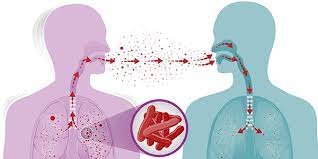Access to safe drinking water is a fundamental requirement for human existence. Safe drinking water and good sanitation is vital for a person’s well-being. Under the Central government’s ambitious Jal Jeevan Mission (JJM), which was launched in August 2019, all 18.93 rural households in the country were to be provided drinking water connections by 2024. But as the deadline of providing drinking water through taps to every rural household under the JJM by 2024 is fast approaching, only 50.3 per cent of households in the country have been provided with functional household tap connections (FHTCs), while as many as 13 major states have more than 95 per cent households without these connections.
While smaller states have been able to provide tapped drinking water access to almost all rural households under their jurisdiction, the Jal Shakti ministry has identified 13 major states where more than nine crore or 95 per cent of rural households are yet to be provided with FHTCs. The ministry had claimed that at the time of starting the mission, i.e. in August 2019, only 17 per cent of the 18.93 rural households had tapped drinking water. However, as of June 2022, almost three years since JJM began, only 9.63 crore or 50.3 per cent of rural households had FHTCs. The ministry on its part has said that several laggard states have indicated to it during review meetings that they are facing many bottlenecks while implementing the scheme.
Just last week, the Parliamentary standing committee on water resources pulled up the Jal Shakti ministry for the poor implementation of JJM by many states. The committee observed in its report on the JJM (submitted in Parliament on February 10) that merely enumerating the bottlenecks will not go a long way in achieving the set target, rather a comprehensive review of the scheme needs to be undertaken by the department, keeping in view the bottlenecks identified by the states, and also by further identifying the practical difficulties being faced in its implementation. In this light, the panel has sought a response from the ministry on what action it has taken towards rectifying these aspects, within three months, i.e. by May 2023.
Launched in 2019, JJM envisages supply of 55 litres of water per person per day to every rural household through FHTC by 2024. The fund sharing pattern between the Centre and states is 90:10 for Himalayan and North-East states, 50:50 for other states, and 100 per cent for Union Territories. But improper utilisation of the funds provided for the mission is one of the major reasons for the delay to complete JJM implementation in the country. This occurs when states take time to submit their utilisation certificates of the initial funds released. In other words, a delay in the submission of such receipts and certificates results in a significant delay in the subsequent release of funds to states. In addition, the slow release of a State’s portion of the funds for the JJM can also result in a slow release of total funds for the mission.


























